2014 Toyota Prius Plug-In Tires, Repair & Service
Get Started
Complete Auto Care for Your 2014 Toyota Prius Plug-In
-
TIRES FOR YOUR 2014 Toyota Prius Plug-In View Tire Info GET TIRE PRICING
-
REPAIR FOR YOUR 2014 Toyota Prius Plug-In View Repair Info SCHEDULE REPAIR
-
MAINTENANCE FOR YOUR 2014 Toyota Prius Plug-In View Maintenance Info SCHEDULE MAINTENANCE
-
OFFERS FOR YOUR 2014 Toyota Prius Plug-In Limited Time Tire Offers VIEW ALL COUPONS
2014 Toyota Prius Plug-In Tires
Recommended Tires | Tire Information
2014 Toyota Prius Plug-In Tires Sizes, Speed Ratings, and Inflation
Not sure about your 2014 Toyota Prius Plug-In tire size? Use the following chart to find information on tire size, speed rating, and inflation.
| Trim Level | Speed Rating | Inflation in PSI F/R | Tire Size |
|---|---|---|---|
| 2014 Toyota Prius Plug-In Base | S | 35 PSI/33 PSI | P195/65R15 |
|
2014 Toyota Prius Plug-In Base Speed Rating: S Inflation F/R: 35 PSI/33 PSI |
* Note: these models have different tire sizes depending on vehicle options.
Recommended Tires for Your 2014 Toyota Prius Plug-In
What tires are best for a 2014 Toyota Prius Plug-In? Check out the following tire brands and types.
 Blizzak WS90
Blizzak WS90
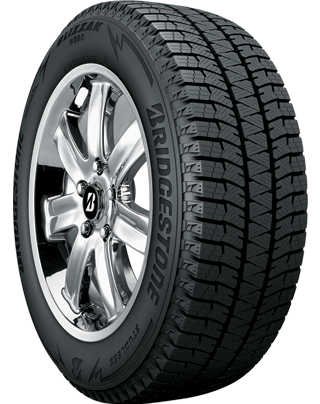
- No warranty
- Winter
- Winter
 Ecopia EP422 Plus
Ecopia EP422 Plus
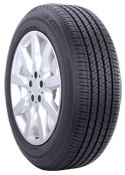
- Platinum Pact Limited Warranty
- All-Season
- Performance
 Turanza QUIETTRACK
Turanza QUIETTRACK
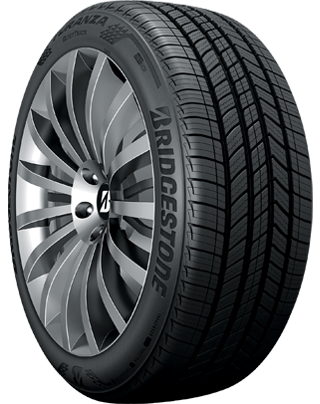
- No warranty
- All-Season
- Performance
 WEATHERPEAK
WEATHERPEAK
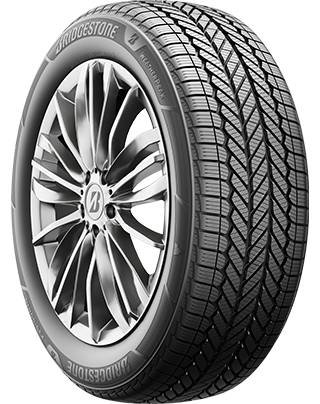
- Platinum Pact Limited Warranty
- All-Season
- Passenger Tires
 Affinity Touring S4 FF
Affinity Touring S4 FF
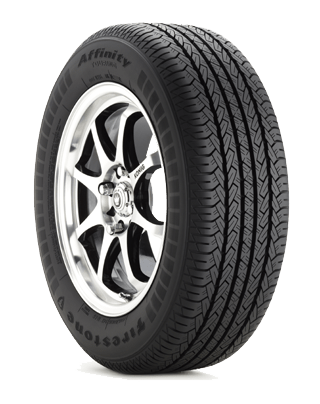
- Gold Pledge Limited Warranty
- All-Season
- Passenger Tires
 ALL SEASON
ALL SEASON
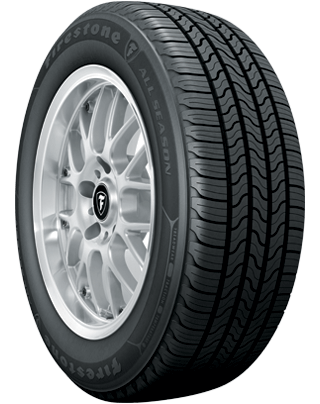
- No warranty
- All-Season
- Passenger Tires
 FT140
FT140
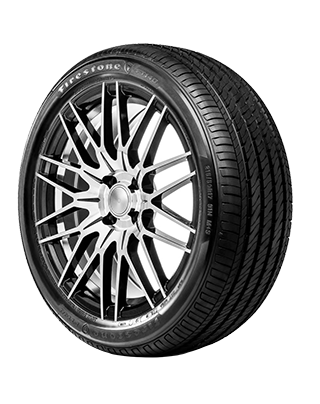
- No warranty
- All-Season
- Passenger Tires
 WEATHERGRIP
WEATHERGRIP
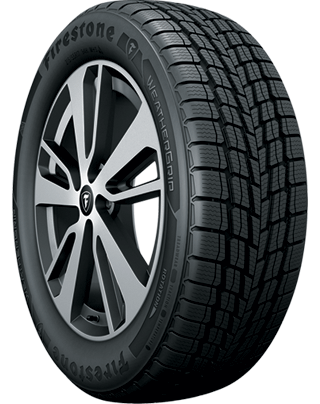
- No warranty
- All-Season
- Passenger Tires
 Winterforce 2
Winterforce 2
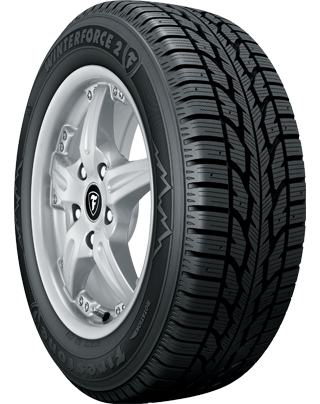
- No warranty
- Winter
- Winter
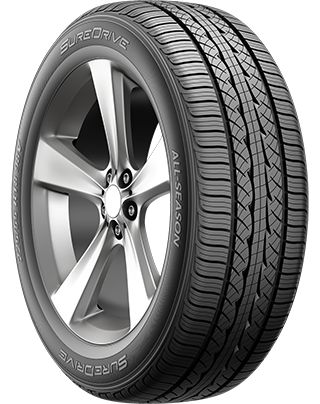
- No warranty
- All-Season
- Passenger Tires
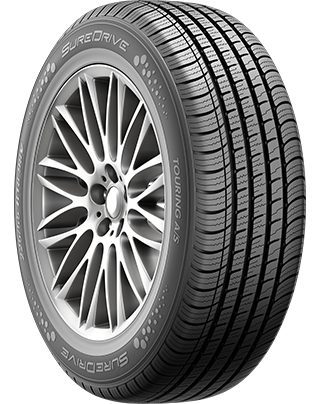
- No warranty
- All-Season
- Passenger Tires
 Extensa A/S II
Extensa A/S II
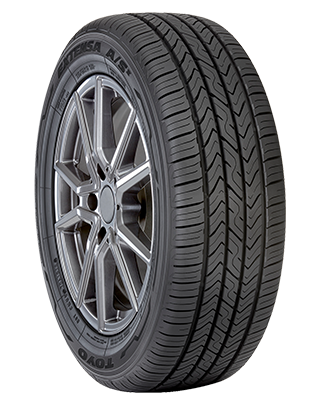
- No warranty
- All-Season
- Passenger Tires
Choosing 2014 Toyota Prius Plug-In Tires
Apart from finding the right tire size, there are a couple of other factors to consider when buying Toyota Prius Plug-In tires like where and how you drive, and what tire brand you trust most. When thinking about your driving conditions, consider where you live (mountains vs. city vs. countryside) and the kind of weather can catch you off-guard. (Watch out Tornado Alley!) It's not uncommon for drivers in states that experience all four seasons to buy more than one set of tires. one set for winter, one set for summer. Other drivers buy one set of all-season tires instead. That way they don't have to return to the tire shop and their vehicle is always ready for sun, rain, and light snow!
Driving style is next on the list to think about when buying tires. If you're a diehard off-roader, you have very different tire needs than a highway commuter who doesn't leave the paved path. Talk to a tire technician at Firestone Complete Auto Care for help choosing the best tire for you, or start shopping for Toyota Prius Plug-In tires online.
Installing Toyota Prius Plug-In Tires
Firestone Complete Auto Care installs more tires on more cars than most other companies. We're your one-stop shop for tire installation, rotation, and ongoing maintenance! Shop 2014 Toyota Prius Plug-In tires online and schedule an installation appointment.
2014 Toyota Prius Plug-In Tire Questions
-
Why does Toyota tire inflation matter? The right tire pressure can make all the difference. Proper tire inflation helps increase fuel economy, improve braking time, and boost tire lifespan! Even a small change in tire pressure can impact your driving.
-
Why are there numbers on the side of my Toyota Prius Plug-In tires? Your tire sidewall gives you information about load carrying capacity, speed rating, treadwear, traction, and tire size. Talk to one of our tire technicians to learn how to read the numbers on your tire!
-
Can I check the tread depth on my Toyota tires at home? Stay on top of your tire tread depth to help avoid a dangerous drive. You can check tread depth with a penny. Hold the penny so that Abraham Lincoln is facing you, then place your penny into a tread groove upside down. If you can see the top of Abe’s head, your tread is shallow and it might be time for new Toyota Prius Plug-In tires. Grab a penny. Hold the so that Abe Lincon's head is facing you and his hair is pointing toward the ground. Then, place the penny into a tread groove. If you can see the top of Abe’s head, your tread is shallow and it might be time for new Toyota Prius Plug-In tires.
Repair Services for Your 2014 Toyota Prius Plug-In
When to repair, when to replace? Click on a repair below to learn more about Toyota Prius Plug-In repairs at Firestone Complete Auto Care.
Get Repairs for Your 2014 Toyota Prius Plug-In
For most drivers, the words “car repair” don’t exactly spark excitement. We’re here to change that, though. At Firestone Complete Auto Care, we want to make car repair painless and hassle-free. Bring your 2014 Toyota Prius Plug-In in for repair services and our technicians will take care of your Prius Plug-In like it was their own. Before we begin any repair work, we’ll diagnose any issues and answer your questions about potential repair options. If a repair isn't necessary, we won't recommend it.
How Much Are Toyota Prius Plug-In Repairs?
Several factors can affect the cost to repair your 2014 Toyota Prius Plug-In, including which repairs are needed, prices of appropriate replacement parts, how much labor the repair will take, and where you live. But no matter your location, you may be able to save money with one of our many auto repair coupons or offers.
A few different aspects can influence repair costs for your 2014 Toyota Prius Plug-In, like
2014 Toyota Prius Plug-In Auto Repair Questions
-
Do I still need scheduled maintenance even when nothing is wrong with my Toyota? The cheapest 2014 Toyota Prius Plug-In repair is the one that isn’t necessary in the first place! Staying up-to-date with your car’s scheduled maintenance services is a great way to keep future repair costs low.
-
Should I bring my Toyota in even if I can't pinpoint the problem? You know your vehicle. You also know when something feels 'off' with your vehicle. Pay attention when things don't run like they used to and stop by for a Courtesy Check when you notice an unusual sign, smell, or sensation. We might be able to help you prevent Toyota Prius Plug-In repairs!
-
Do I have to get the repairs you recommend for my Toyota? Trust is more than just a saying on the wall. It’s a window underneath it. That’s why we won’t recommend services or repairs for your 2014 Toyota Prius Plug-In unless we think they’re vital to your safety on the road.
Get Your 2014 Toyota Prius Plug-In Brakes Fixed
You might have a strong and reliable engine in your Toyota Prius Plug-In. But if you can’t stop it, it’s as good as scrap metal. If you notice your brakes are squeaking or not working well, don’t wait! Safe driving and responsive brakes go hand in hand. Plus, waiting can lead to more expensive parts wearing out and requiring replacement. Go to your local Firestone Complete Auto Care for 2014 Toyota Prius Plug-In brake repairs. We offer a variety of brake services like brake pad/shoe replacement, brake rotor/drum resurfacing, brake fluid exchange, and brake caliper and wheel cylinder installation.
Toyota Prius Plug-In Brakes Questions
-
What is causing my Prius Plug-In to shake when I brake? If your Prius Plug-In shakes when you brake, you could be dealing with warped rotors, faulty brake calipers, worn brake pads or rotors, or loose or worn suspension parts. Schedule a free brake inspection at Firestone Complete Auto Care for help diagnosing your brake issue.
-
How long can I expect my Prius Plug-In brake pads to last? In general, brake pads can last from 30,000 to 40,000 miles. Certain factors, like driving on highways mostly and braking smoothly, can help your brake pads last longer. Hauling heavy loads and riding your brakes can shorten brake pad lifespan.
-
Can brake fluid leak when my Prius Plug-In is off? Your Prius Plug-In brake system is a closed hydraulic system, so a brake fluid leak likely means you have an issue in your brake system. Over time, brake components can wear out or get damaged, causing a brake fluid leak.
Repairing Your Toyota Prius Plug-In Drivetrain
Drivetrains for front, rear, and all-wheel-drive and 4WD vehicles are quite different, so you don't want to go to just anyone for drivetrain repair. You want to go to Firestone Complete Auto Care. We can take care of most 2014 Toyota Prius Plug-In drivetrain components Your Toyota could be crying out for driveshaft repair if you notice resistance when turning, heavy vibrations in your floorboards, clunks when shifting, or vibration as your vehicle accelerates.
2014 Toyota Prius Plug-In Drivetrain Questions
-
How do I know if my Toyota drivetrain is damaged? Noises toward the back of your Toyota Prius Plug-In, leaking fluid, trouble turning — these could all be signs of drivetrain damage you want to address. Take action before something more severe happens.
-
Why is the malfunction indicator light (MIL) on in my Prius Plug-In? A multitude of problems can activate your Prius Plug-In’s malfunction indicator light (better known as the check engine light), including issues with the engine, transmission, sensors, electrical system, or connectors.
-
How concerning is a drivetrain malfunction in my Prius Plug-In? If you experience a drivetrain malfunction in your Prius Plug-In, it is important to have it inspected by a professional mechanic as soon as possible to identify the underlying cause and perform the necessary repairs. Driving with a malfunctioning drivetrain can be dangerous and cause further damage to your car.
2014 Toyota Prius Plug-In Alignment Services
With an alignment service, adjustments are made to your Toyota Prius Plug-In’s suspension system, which serves to attach your wheels to your vehicle. When your car has an alignment service, your tire angles are adjusted according to measurements recommended by Toyota. Why? So that your tires can make contact with the road at the best possible angle. Bring your 2014 Toyota Prius Plug-In in for a wheel alignment and we'll start with an alignment check. After that, we can adjust your wheel alignment angles until they match Toyota’s recommended measurements.
Answers to Toyota Prius Plug-In Alignment Questions
-
Are there road conditions that can hurt my Toyota Prius Plug-In alignment? Potholes and uneven roads can knock your car out of alignment, so stay aware of the road ahead and adjust your speed (or avoid these obstacles whenever it’s safely possible).
-
How frequently should you get a wheel alignment for your Prius Plug-In? Check your Prius Plug-In owner's manual for Toyota's recommended interval. It's generally a good idea to check your alignment every 6,000 miles or 6 months, depending on which comes first.
-
Do you need an alignment with new Prius Plug-In tires? While you don’t necessarily need to get an alignment when putting new tires on your Prius Plug-In, it’s still a good idea. Ensuring your wheels are properly aligned can help support optimal handling, tire wear, and fuel efficiency.
Engine Repairs for Your 2014 Toyota Prius Plug-In
When your Toyota Prius Plug-In engine needs repairs, our technicians will provide you with a thorough explanation beforehand. We make recommendations, but you make the final decision. If a service can wait, we’ll make sure you know. If it's necessary for your safety, we'll make sure you understand that, too. We want to give you all the details you need to make an informed decision about your engine repairs. Choose Firestone Complete Auto Care for Toyota Prius Plug-In engine repairs and you can feel confident knowing that we use Toyota-approved parts and components like the cambelt, valve guide seal, sensors, or other parts.
Engine Q&A 2014 Toyota Prius Plug-In
-
Why does my Prius Plug-In’s check engine light come on when I start it? It’s usually normal for your check engine light to turn on upon ignition. This is just your Prius Plug-In testing its circuits. The dash light shouldn't stay on. If it does, you might want to bring your vehicle in for service.
-
Why is my Toyota Prius Plug-In making engine noise? Strange under-the-hood noises can point to problems within your Toyota Prius Plug-In engine. Tapping or knocking could mean you need an oil change. Whistling sounds could mean you have an intake leak or misaligned belt. Squealing may be caused by a loose fan belt, and grinding could be a sign that something is wrong with your brakes — not the engine.
-
What could damage a Toyota engine? Certain driving habits can hurt your engine. These habits include driving on an empty fuel tank, revving your engine while the vehicle is in Park, or slamming the gas pedal while the engine is still cold. Steer clear of these habits to help protect engine performance and efficiency.
Tire Repair for Your 2014 Toyota Prius Plug-In
Firestone Complete Auto Care is here for you when your 2014 Toyota Prius Plug-In needs flat tire repair or inspection. There’s a chance your tire could be plugged and patched (rather than replaced). Our technicians can inspect your tire and let you know if it is safe to repair. We'll start by evaluating the state of wear, the location of damage, type of damage, and the size of the damage.
If a repair on your 2014 Toyota Prius Plug-In tire is feasible and safe, we’ll get to work on the steps to fix it: (1) Remove the tire from the wheel for inspection and repair, (2) fill in the area that’s been punctured to prevent damage from moisture, and (3) secure and seal the inner tire liner to ensure the tire is airtight.
Frequently Asked Toyota Prius Plug-In Tire Repair Questions
-
Can I drive my Toyota on a flat tire? Driving on a flat tire is not a good idea. Your Prius Plug-In engine will keep running with a flat tire, but you could damage your wheel by continuing to drive on a flat.
-
Will a temporary sealant fix my Toyota's flat tire? Fast fixes are a mixed blessing. They’ll help you get your Toyota Prius Plug-In to Firestone Complete Auto Care, but don’t count on them to keep you on the road for very long. Using a temporary sealant may also void a Bridgestone or Firestone tire warranty.
-
Why do my Prius Plug-In tires keep losing air? Your Prius Plug-In tires might keep losing air due to a leaking valve stem, puncture or hole in the tire tread or sidewall, or damaged wheel.
2014 Toyota Prius Plug-In Maintenance
When it comes to your Toyota Prius Plug-In, how you treat your car makes all the difference in its performance. With proactive maintenance, your Prius Plug-In could be on the road well past the 200,000 mile mark.
2014 Toyota Prius Plug-In Maintenance Schedule
What is the manufacturer recommended maintenance schedule for a 2014 Toyota Prius Plug-In? Find maintenance info for your vehicle.
Guide to 2014 Toyota Prius Plug-In Scheduled Maintenance
It can be overwhelming, but fortunately, there’s a resource that takes the guesswork out of routine Prius Plug-In maintenance. Just follow your 2014 Toyota Prius Plug-In maintenance schedule! Toyota knows your vehicle inside and out (they made it, after all!), so they’ve designed this schedule with your car’s unique needs in mind. Driving conditions, climate variations, and other variables can affect which scheduled maintenance services you’ll need; in most cases, though, recommended maintenance will consist of services like tire rotations, vital fluid checks/exchanges, filter changes, brake pad replacement, and oil changes. Staying on track with routine service appointments can help your Prius Plug-In perform better, keep you safer on the road, and maybe even save you the headache of dealing with common 2014 Toyota Prius Plug-In problems in the future.
Learn About Vital Maintenance Needs for Your Toyota Prius Plug-In
Bring your 2014 Toyota Prius Plug-In to Firestone Complete Auto Care for factory-recommended maintenance services and our technicians will jump right in with a Courtesy Check. This Courtesy Check can establish a baseline of what may need to be addressed during your service appointment. Each Courtesy Check includes a free battery test and an inspection of your Prius Plug-In's windshield wiper blades, head and tail lights, filters, fluid levels, tires, and alignment.
Firestone Complete Auto Care is your one-stop shop for 2014 Toyota Prius Plug-In maintenance and repairs. We can help you keep your vehicle (and your life!) running smoothly. Many of our locations have weekend and evening hours for your convenience.
Questions About 2014 Toyota Prius Plug-In Maintenance
-
What should I do after hitting a pothole in my Toyota Prius Plug-In? Watch out for pothole damage. If your 2014 Prius Plug-In is pulling to one side or the other, your tires or suspension system could be calling out for help.
-
When should I switch my Toyota Prius Plug-In to high mileage oil? Got 75,000+ miles on the odometer? Consider high mileage motor oil. High mileage oil is formulated to address the specific problems encountered by high mileage vehicles, or those with more than 75,000 miles. It can help reduce oil consumption, smoke, and emissions from older Toyota Prius Plug-In engines.
-
Can Toyota dashboard warning lights wait? Because there might be a problem under the hood. Those warning lights are there for a reason! As soon as you notice that one’s illuminated, take your Toyota Prius Plug-In to Firestone Complete Auto Care so you can address any small problems long before they worsen.
The Right Battery Size for a 2014 Toyota Prius Plug-In
Not sure what battery to get for your Toyota Prius Plug-In?
| Battery | Engine | Warranty | Cold Cranking Amps | |
|---|---|---|---|---|
| L4/1.8L | Replacement months | Performance months |
2014 Toyota Prius Plug-In Batteries
Generally, car batteries last from three to five years. You want to replace your 2014 Toyota Prius Plug-In battery before it fails and leaves you stranded. Look out for symptoms of a faulty car battery. A lagging starter, a blinking battery or check engine light, bloated battery case, corroded battery posts, or faded headlights can all signal that your battery is on its last leg.
Plus, at Firestone Complete Auto Care, we’ll test your battery for free. Drop in for a free battery check and, if necessary, a battery replacement to help keep your 2014 Toyota Prius Plug-In running! Automotive batteries are just one of our many areas of expertise. Our technicians are well-acquainted with Toyota’s service specs for Prius Plug-In battery CCAs and reserve capacity. Get help choosing the battery size that matches your vehicle, and schedule a weekday or weekend battery replacement service for your car.
Answers to Your Toyota Prius Plug-In Car Battery Questions
-
Why won’t my Toyota Prius Plug-In battery hold a charge? A battery is in its final hour when it will no longer hold a charge. The battery may be too old. Or, you may have been leaving your car doors ajar and the cabin light at night. Stop by for a complimentary battery check at your favorite Firestone Complete Auto Care and get a handle on your car battery’s health.
-
What is the average lifespan of a car battery? The typical 12-volt car battery may last three to five years, depending on the type of battery, the driving conditions, and how well the battery is maintained.
-
What is the white, crusty substance accumulating on my Prius Plug-In’s battery post? A chemical reaction between battery acid and the air can cause a white, crusty buildup to form on the terminals of your Prius Plug-In car battery. This buildup — known as corrosion — can impede the flow of electricity and cause a range of issues, from poor performance to premature battery failure.
2014 Toyota Prius Plug-In Oil Changes
Toyota recommends having your 2014 Toyota Prius Plug-In’s motor oil changed at regular intervals. Outside of Toyota-recommended oil change intervals, your Prius Plug-In may need an oil change if your check engine light is on, you hear engine knocking, smell oil inside the vehicle, or notice an unusual amount of exhaust. You might need an oil change more frequently than what’s recommended by Toyota if you regularly haul heavy loads, drive in dusty terrain, go off-roading a lot, or go at low speeds on long distance trips.
Whether it’s synthetic, conventional, or a blend of both — your local Firestone Complete Auto Care has the right oil for your Toyota Prius Plug-In. Consult Toyota's recommendations to select the right 2014 Prius Plug-In oil and talk with a teammate to learn more about our oil options: Quaker State® Advanced Durability™ conventional oil, Pennzoil® High Mileage Vehicle® motor oil, Pennzoil Platinum® Full Synthetic motor oil with PurePlus™ Technology, and Shell Rotella® heavy-duty engine oil. During an oil change, one of our techs will change your Prius Plug-In’s oil, replace and recycle your used oil and filter, inspect the rest of your car’s filters, top-off important fluids, and perform a free inspection on the rest of your vehicle. Make an appointment for an oil change service today and let the oil experts take care of your Prius Plug-In's engine.
2014 Toyota Prius Plug-In Oil Change Q&A
-
Why is the oil light on in my Toyota Prius Plug-In? If you’re overdue for an oil change, it might trigger your Toyota Prius Plug-In oil change reminder light. If the oil pressure light is illuminated, it could be due to low engine oil, a failing oil pump, a malfunctioning oil pressure sensor, or a clogged oil filter.
-
Can I change my Toyota Prius Plug-In oil at home? Changing engine oil at home isn’t as simple as it’s made out to be. You’ll have to figure out how to properly dispose of the oil and buy special tools. Having your oil changed professionally can not only reduce the risk of something going wrong during the service, but it’ll also help your car perform smoothly down the road.
-
Why is my Toyota Prius Plug-In exhaust smoke grayish or blue? There could be an oil leak and your engine is burning oil. Time to have a qualified technician check things out. The leak could be caused by several issues like leaking valve seals, damaged piston rings, or worn cylinder walls.
2014 Toyota Prius Plug-In Engine Tune-Ups & Maintenance
Routine engine tune-ups can bring power back to your Prius Plug-In. Your nearest Firestone Complete Auto Care location has several options to choose from when it comes to Toyota Prius Plug-In engine tune-up services. The standard Firestone Tune-Up is one service option. This includes the installation of new spark plugs and a visual inspection of your engine’s components, plus a lifetime warranty on parts*. Another service option pays special attention to the filters in your Prius Plug-In. Specifically, we replace the fuel filter and air filter. Our third service is a thorough cleaning of the fuel system. During this type of tune-up, we use a three-step process to get rid of harmful varnish, dirt, and carbon deposit buildup in your Prius Plug-In’s fuel injectors, throttle body, and throttle plate. The result? Restored fuel system performance. Keep in mind that your Prius Plug-In's mileage and maintenance history can uniquely impact its tune-up needs. Chat with a Firestone technician before you jump into a specific service to ensure your engine tune-up money is well-spent.
*Talk to a Firestone Complete Auto Care teammate for full terms and conditions on warranties.
Common Engine Tune-Up Q&A for 2014 Toyota Prius Plug-In
-
What happens if my Toyota Prius Plug-In spark plugs fail? When it’s time to replace the spark plugs, don’t delay. These small (but vital!) parts provide the electric spark that your car needs in order to start, and old spark plugs can prevent your car from starting at all. Replace spark plugs on time or about every 30,000 miles or so.
-
What should I do if I see leaks under my Prius Plug-In? Puddles could indicate that your vehicle is leaking coolant, oil, or brake fluid. Ignoring these leaks can lead to permanent engine damage, so address these symptoms ASAP with a tune-up service.
-
How often should I clean my Toyota Prius Plug-In fuel injectors? The cleaning schedule for vehicle fuel injectors varies depending on your driving conditions and the type of fuel you use. Some manufacturers suggest cleaning your fuel system as part of routine maintenance, while others will recommend it on an as-needed basis if you’re experiencing poor performance. Reference your Toyota owner’s manual for exact guidelines.
2014 Prius Plug-In Toyota Steering & Suspension Services
When you first drove your 2014 Toyota Prius Plug-In, you and your passengers probably enjoyed a ride that was smooth and balanced. Now, however, things are starting to feel a little rough. Maybe your Prius Plug-In jolts, sways to one side, or makes noise whenever you turn or drive over a speed bump. The first sign of problems is a good time to bring your 2014 Toyota Prius Plug-In in for suspension and steering service. We’ll get to the source of your car problems and, if steering and suspension service is needed, we’ll go over the services you need and how much they will cost before we do any work.
2014 Prius Plug-In Steering & Suspension Q&A
-
Why is my Toyota Prius Plug-In bouncing excessively? Excessive bouncing in your Toyota Prius Plug-In might be due to damaged struts or shocks that are unable to absorb road bumps effectively, causing your vehicle to feel more like a pogo stick than a smooth ride.
-
Why does my Prius Plug-In tilt forward when I hit the brakes? As you brake, the forward momentum of your Prius Plug-In combined with its weight sends a ton of force to its front end. A damaged or worn suspension system can cause the front end to compress and dip even further.
-
Does treadwear and tire pressure impact my Prius Plug-In's steering and suspension? Proper tire care can reduce strain on the suspension system, and also alert you to the need for new tires. Uneven tire wear is one sign of steering and suspension system problems, but it can also contribute to more.
2014 Toyota Prius Plug-In A/C Service Near You
Our trained technicians will do what they can to solve your 2014 Toyota Prius Plug-In A/C problems. During an A/C performance check, we'll determine the condition of your 2014 Toyota Prius Plug-In A/C system to evaluate what repairs are necessary (if any). This check will include an examination of system pressure, a visual inspection, and a leak test.
Let's say we repair your 2014 Toyota Prius Plug-In A/C system. We will also perform an A/C evacuation and recharge. During this process, a technician will remove the old refrigerant from the A/C system. Then, they’ll use Toyota’s specifications to evacuate the system. The A/C system is recharged with new refrigerant.
Questions About 2014 Toyota Prius Plug-In A/C Systems
-
Why do I get hot air from my Prius Plug-In A/C? An A/C blowing hot air has several possible root causes. There could be an issue with your compressor clutch, a blown fuse, a leak, or a clog in the expansion valve.
-
How does my A/C system get a leak? To put it simply, age and moisture are some of the main causes of leaks in your A/C. Over time, rubber gaskets and seals can wear out, which pushes much-needed refrigerant out of your Prius Plug-In’s A/C system — and lets outside moisture get in, which can take a toll on internal A/C components.
-
Why won’t my Prius Plug-In’s A/C cool the vehicle when the car is stopped? If your A/C only works when the vehicle is moving, there could be a problem with part of your Prius Plug-In’s A/C or electrical system. Potential issues include low coolant or a faulty cooling fan.
Transmission Services for 2014 Toyota Prius Plug-In
The transmission delivers power from the motor to your wheels so that you can drive at your desired speed. Because of the transmission’s responsibility to translate the right dose of power into the right amount of speed, a tiny transmission issue can take a major toll on your car’s performance. 2014 Toyota Prius Plug-In transmission issues could include shifting delays, jumping or grinding during acceleration, the car shaking at any speed, or whistling noises or a burning smell coming from beneath the hood. If you don’t pay attention to Toyota Prius Plug-In transmission trouble you could see your fuel economy decrease or find that your Prius Plug-In isn’t working at all. Our technicians know how to service your 2014 Prius Plug-In up to Toyota-recommended standards. Schedule an appointment at your local Firestone Complete Auto Care at the first sign of transmission problems to help keep your engine running at peak performance.
Questions About 2014 Toyota Prius Plug-In’s Transmission
-
When should I have my Prius Plug-In's transmission fluid checked or exchanged? Caring for your Toyota Prius Plug-In’s transmission fluid is a great way to help it perform. About every 30,000 to 60,000 miles is a good timeframe for having your transmission fluid inspected and perhaps changed. Service intervals can vary depending on how you use your Toyota, so check with your technician first. Luckily, leaks and low fluid levels are easy to spot and inexpensive to fix.
-
Is it possible for transmission fluid to leak from my Toyota Prius Plug-In? Yes. Toyota Prius Plug-In transmission fluid can leak over time and potentially cause transmission issues. Worn or damaged seals, a loose or damaged transmission pan, a cracked transmission housing, faulty transmission cooler lines, or an overfilled transmission could cause transmission fluid leaks.
-
Should I avoid driving my Toyota Prius Plug-In if there is a transmission fluid leak? Driving your Prius Plug-In with a transmission fluid leak is highly discouraged. Transmission fluid is vital to the smooth operation of your transmission system, and a leak can put the entire system at risk. A transmission fluid leak may lead to decreased performance, overheating, and possibly even transmission failure.
Get a 2014 Toyota Prius Plug-In Vehicle Inspection
When you bring your vehicle to Firestone Complete Auto Care for any service, we’ll automatically do a multi-point Courtesy Check. First, a technician will pop the hood on your Toyota Prius Plug-In and test the battery to determine how much charge remains. We’ll follow the battery inspection with a visual check of your Toyota Prius Plug-In’s filters, lights, wiper blades, alignment, tires, hoses, belts and fluid levels.
We perform a Courtesy Check any time you bring your car to a local Firestone Complete Auto Care for service, but we can also dig deeper and perform a Complete Vehicle Inspection on your 2014 Toyota Prius Plug-In if you prefer. During a Complete Vehicle Inspection, we’ll visually check everything that’s on the list for a Courtesy Check. Additionally, we’ll perform a thorough manual inspection of your steering, suspension, brakes, and exhaust system. The goal of this type of inspection is to unearth significant issues that might require preventative maintenance.
Depending on where you live, you may be able to complete your vehicle’s safety tests or state inspection at your nearest Firestone Complete Auto Care. Inspections are performed on a state-by-state basis and requirements vary.
2014 Toyota Prius Plug-In Vehicle Inspection Q and A
-
How do I know if I should have an inspection on my Toyota Prius Plug-In? It needs a check-up if something feels 'off' to you, the driver. Your Toyota Prius Plug-In could benefit from a Courtesy Check if it has any illuminated dashboard lights, you hear weird noises coming from any part, the engine doesn't start sometimes, or your vehicle pulls to one side.
-
Help! My 2014 Toyota Prius Plug-In failed the state inspection test. Can you get it to pass? There's a good chance we can. Stop by for a full system inspection and we'll get to the root of the issue.
-
When should I get a complete vehicle inspection for my Toyota Prius Plug-In? It’s generally a good idea to get a complete vehicle inspection for your Toyota Prius Plug-In before a road trip and/or when something strange occurs and you are unable to find the cause. Signs something is up include dashboard lights illuminating, odd noises coming from the engine, and your steering feeling loose or tight.
2014 Toyota Prius Plug-In Radiator Repair & Service
Regular, proactive service on the radiator in your 2014 Toyota Prius Plug-In is a huge factor in the longevity of your engine. To keep your radiator functioning, Toyota recommends replacing your antifreeze or coolant at scheduled intervals but it’s also wise to keep an eye out for signs of a failing radiator. You could be on the verge of a radiator-induced engine breakdown if you notice a low coolant light or higher-than-normal engine temperatures on your dashboard, or if you spot coolant leaks coming from your car.
At Firestone Complete Auto Care, we start by performing a thorough inspection of your Toyota Prius Plug-In cooling system. We’ll do a machine-powered coolant exchange on the system, and then we’ll top off or replace the fluids that were removed (like chemicals, lubricants, and sealants). Lastly, we’ll perform a pressure check to look for leaks. From the heater core to the radiator cap, we’ll take excellent care of your 2014 Toyota Prius Plug-In at Firestone Complete Auto Care.
Common Toyota Prius Plug-In Radiator Questions
-
What does the coolant light on my Toyota dashboard mean? Pay attention to the temperature gauge and lights on your dashboard. If a low coolant warning light comes on or your dashboard temperature gauge keeps rising, it’s likely that your engine is about to overheat (and could leave you stranded on the road). Wait for the engine to cool down, then have your coolant system checked immediately at your nearest Firestone Complete Auto Care.
-
Why is my Prius Plug-In overheating? Low coolant, a damaged cooling fan, a faulty water pump, a malfunctioning thermostat, or a clogged radiator could all cause your Toyota Prius Plug-In engine to overheat.
-
Why does the radiator in my Prius Plug-In sound like it’s rumbling or boiling? There could be air pockets in your Prius Plug-In’s cooling system. You might also have a clogged radiator or faulty radiator cap (this last one is an easy fix!).